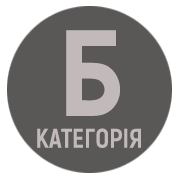Influence of digital communication on the English language norms: analysis of modern tendencies
DOI:
https://doi.org/10.32782/2617-3921.2025.27.132-140Keywords:
digital communication, emojis, English language, linguistic norms, slang, social networks, syntax, vocabularyAbstract
The present paper is an attempt to analyse and describe the impact of modern digital technologies on traditional English language norms by tracing lexical, syntactic and graphic transformations. Digital communication (or DC), represented by social media, messengers and online platforms, contributes to the modification of traditional language norms. The impact of digital communication on the English language is significant: its vocabulary has been enriched with new words, borrowings, abbreviations, and acronyms that quickly adapt to the norms of the English language. The use of terms from other languages, such as “emoji” and “anime” (Japanese), “meme” (Greek), “avatar”, and “rendezvous” (French), is evidence of the globalisation of the digital space. The appearance of various graphic elements, such as emojis or CamalCase, in DC has been caused by technical limitations and the need to transmit information quickly. They reflect the cultural characteristics of the communities that use these means of communication. Syntactic changes make up an important aspect as well: simplification of sentences, reduction of syntactic constructions and use of informal style. The research methodology includes the analysis of digital discourse, including comments and publicly available publications. The main trends in DC include saving speech effort, hybridity, interactivity and dynamism. These changes have a significant impact on the communicative culture and the adaptation of English to new conditions of communication. Transformations in the norms of the English language caused by modern trends reflect the general process of linguistic evolution under the influence of technology. The study demonstrates that digital communication is the driving force behind the transformations of contemporary English, which is reflected in the adaptation of lexical norms, the appearance of new means of expression and changes in the structural organisation of the text. The perspective of the research is to study the changes in language strategies in digital communication under the influence of the processes of development of modern English language norms.
References
Грабар Н. Г. Соціально-психологічні проблеми спілкування у віртуальній реальності. Бібліотекознавство. Документознавство. Інформологія. № 3–4. 2012. С. 82–85.
Зайцева С. В. Інтернет спілкування як нова форма міжособистісної комунікації. Дослідження з лексикології і граматики української мови. Вип. 11. 2012. С. 45–53.
Луценко О. І. Лінгвістичні аспекти Інтернет-комунікації. Наукові записки Національного університету «Острозька академія». Серія: Філологічна. Вип. 40. 2013. С. 64–66.
Огороднік К. Особливості інтернет спілкування. Лінгвокогнітивні та соціокультурні аспекти комунікації. 2012. URL: https://naub.oa.edu.ua/2012/osoblyvosti-internet-spilkuvannya/ (дата звернення: 25.10.2025).
Посохова В. В. Стилі онлайн спілкування інтернет-користувачів в повсякденній мережній діяльності. Теоретичні і прикладні проблеми психології. № 3. 2013. С. 211–215.
Столярова М. О. Етикет у віртуальній англомовній комунікації (на матеріалі чатлайнових сесій): автореф. дис. … канд. філол. наук 10.02.04. Київ, 2005. 20 с.
Baron N. Always On: Language in an Online and Mobile World. England: Oxford University Press, 2013. 304 p.
Crystal D. Txtng: The Gr8 Db8. England: Oxford University Press, 2009. 278 p.
Danet B., Herring S. The Multilingual Internet: Language, Culture, and Com- munication Online. England: Oxford University Press, 2007. 320 p.
David M. K. Language and the Digital Realm: Sociolinguistic Perspectives. Palgrave Macmillan, 2019. 255 p.
Kemp S., Datareportal. Digital: 2020 Global digital overview. URL: https://datareportal.com/reports/digital-2020-global-digital-overview (дата звернення 14.03.2025)
Kimdall C. A. Study of the Most Common Misspelled Words. URL: http://www.spellingsociety.org/journals (дата звернення 20.02.2025).
Nowson S. The Language of Weblogs: a Study of Genre and Individual Dif- ferences. Unpublished Doctoral Thesis. University of Edinburgh, 2006. 279 p.
Raymond E. The Jargon File, version 4.4.8. URL: http://www.catb.org/~esr/jargon/ (дата звернення 20.03.2025).
Tagliamonte S. A., Derek D. Linguistic ruin? LOL! Instant messaging and teen language. American Speech, 2008. Vol. 83. № 1. Р. 3–34.



